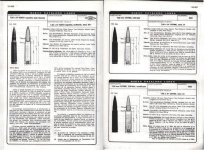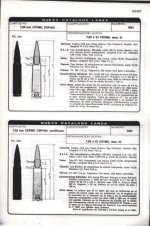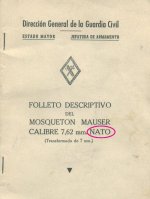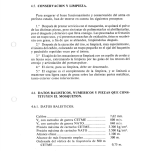Hello all,
I have been given the opportunity to purchase a Spanish 1916 Mauser chambered in .308, and I couldn't bring up any real research on my own about the history of Spanish Mausers. There doesn't even seem to be a basic Wiki page. I'm looking for a rifle that I can use without worry, and debate seems split between people who think this rifle is a pipe bomb waiting for the wrong chamber pressure, or it's a workhorse that can handle any ammunition you can toss its way. I'm curious what this forum thinks.
To be more precise, I've heard lots about Isreali Mausers being essentially tough as nails and able to chew through any .308 or 7.62 NATO (standard loads, we're not talking reloads here). I'd like to have a Mauser I can supply by simply going down to Walmart and grabbing whatever is cheapest on the shelf, rather than having to worry about getting a particular type of ammunition with a particular psi and a particular bullet weight. I already have headaches enough feeding my M1 Garand!
Any advice you can give me is greatly appreciated.
A few final questions from a rookie who is very new to the Mauser world:
-What books are recommended for in depth dives into the history of the Mauser, especially conversions to .308 and variations from other nations.
-Where can I find an Isreali Mauser in .308? I don't see any on gunbroker, gunsinternational, all my usual haunts.
-Do .308 cartridges require different stripper clips? I bought a pack for my new-to-me M48 and a case of 8mm, but .308 is preferred. Cheaper, easier to find.
I have been given the opportunity to purchase a Spanish 1916 Mauser chambered in .308, and I couldn't bring up any real research on my own about the history of Spanish Mausers. There doesn't even seem to be a basic Wiki page. I'm looking for a rifle that I can use without worry, and debate seems split between people who think this rifle is a pipe bomb waiting for the wrong chamber pressure, or it's a workhorse that can handle any ammunition you can toss its way. I'm curious what this forum thinks.
To be more precise, I've heard lots about Isreali Mausers being essentially tough as nails and able to chew through any .308 or 7.62 NATO (standard loads, we're not talking reloads here). I'd like to have a Mauser I can supply by simply going down to Walmart and grabbing whatever is cheapest on the shelf, rather than having to worry about getting a particular type of ammunition with a particular psi and a particular bullet weight. I already have headaches enough feeding my M1 Garand!
Any advice you can give me is greatly appreciated.
A few final questions from a rookie who is very new to the Mauser world:
-What books are recommended for in depth dives into the history of the Mauser, especially conversions to .308 and variations from other nations.
-Where can I find an Isreali Mauser in .308? I don't see any on gunbroker, gunsinternational, all my usual haunts.
-Do .308 cartridges require different stripper clips? I bought a pack for my new-to-me M48 and a case of 8mm, but .308 is preferred. Cheaper, easier to find.




